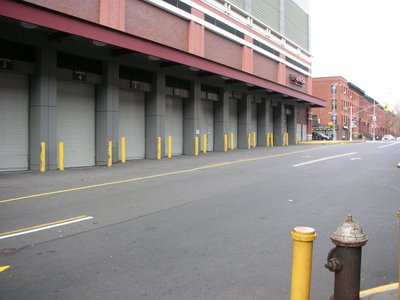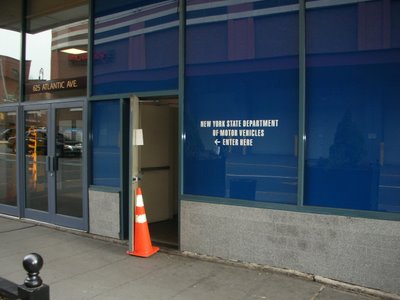The Transportation Argument

We’re told that it makes sense to locate a major development at the proposed site, because it’s already a transportation hub. A nice sound bite, but it’s not the full story.
It certainly is a good idea to use an existing transportation infrastructure in off-peak times. The trains are full to capacity at the peak of rush-hour, and underutilized at other times. Our investment in this infrastructure would yield better returns if it could be used more consistently throughout the day, since much of the capital cost of the infrastructure is fixed (stations, trains, etc), regardless of how often it is used. It’s a strong case, as far as the trains go.
But for better or worse, transportation is not only about trains in Brooklyn. Taxis, commuter vans (aka “dollar vans”), and livery cars operate at peak times, when the mass transit system is full to capacity, but also at proportionally higher levels in inclement weather and at off-peak times, when trains are underused. Trains operate less frequently in off-peak hours, resulting in longer waits on platforms. The smaller organizations of dollar vans allow them to be more responsive to the immediate demands of the market. And in a similar way, private cars often crowd the streets in off-peak times; driving is a more attractive option when the trains are infrequent. On any trip, there can be bottlenecks.
Drivers know that the intersection of Flatbush, Atlantic, and 4th Avenue is one of the most congested in the borough, at virtually all hours of the day and night. Driving over the Manhattan Bridge and along Flatbush into Brooklyn, the first major point of congestion is often Junior’s Restaurant, where double parking and stopping in the drive lanes is still tolerated by the police, perhaps in deference to the iconic status of Junior’s as a political landmark. And continuing along Flatbush, traffic crawls through the developing BAM area and stalls at Atlantic. Traffic in this area is not bad just at rush hour; it’s always bad, degrading the pedestrian environment.
When we talk about taking property for the public good, lets think about options for improving the public realm as well as the larger economy. (In 1853 eminent domain was used to take the properties required to build Central Park; Prospect Park was finished in 1868. The most disturbing thing about the use of eminent domain for the Atlantic Yards project is that the vision of what constitutes the public good is so degraded).
The only way to improve the public realm in this area is to have fewer cars traveling through, not more. Suggestions for improvements have been made: drive lanes should be reduced, not increased. Sidewalks should be widened, not narrowed. Provide less parking, not more. Institute permit parking for residents even without the proposed development, to discourage drivers from parking near the Atlantic/Pacific hub to take the subway into Manhattan; develop park and ride stations further from downtown Brooklyn and closer to the commuters’ origins. And tolls on the Manhattan and Brooklyn bridges with congestion pricing would significantly reduce the number of vehicles that are just passing through.
If those who are calling for an arena at any cost really cared about doing it right, there would have been a study of a range of possible sites, with pros and cons identified and analyzed. Yes, there will always be local opposition to any proposed site for a huge development, but the fact that there will always be opposition is not a sufficient reason for ignoring the issues. The fact is, few outside of the immediate area of any proposed development are concerned with the impact of development on the local area. And in this case, an impact on the local area will have repercussions on a much greater area, from Boerum Hill, Park Slope, and Crown Heights to Prospect Park South, Midwood and beyond. In a real study of possible sites, locating a surge of 19,000 additional people at one of the most congested intersections of a main artery in Brooklyn would not likely be selected as the best fit for this program.


